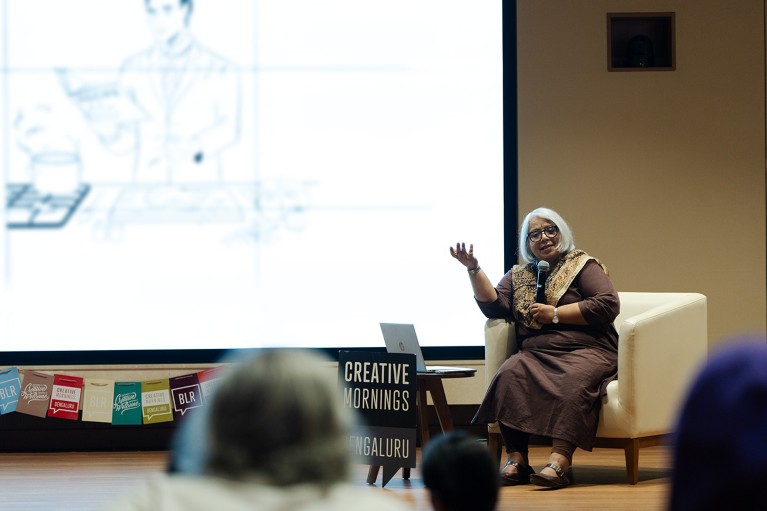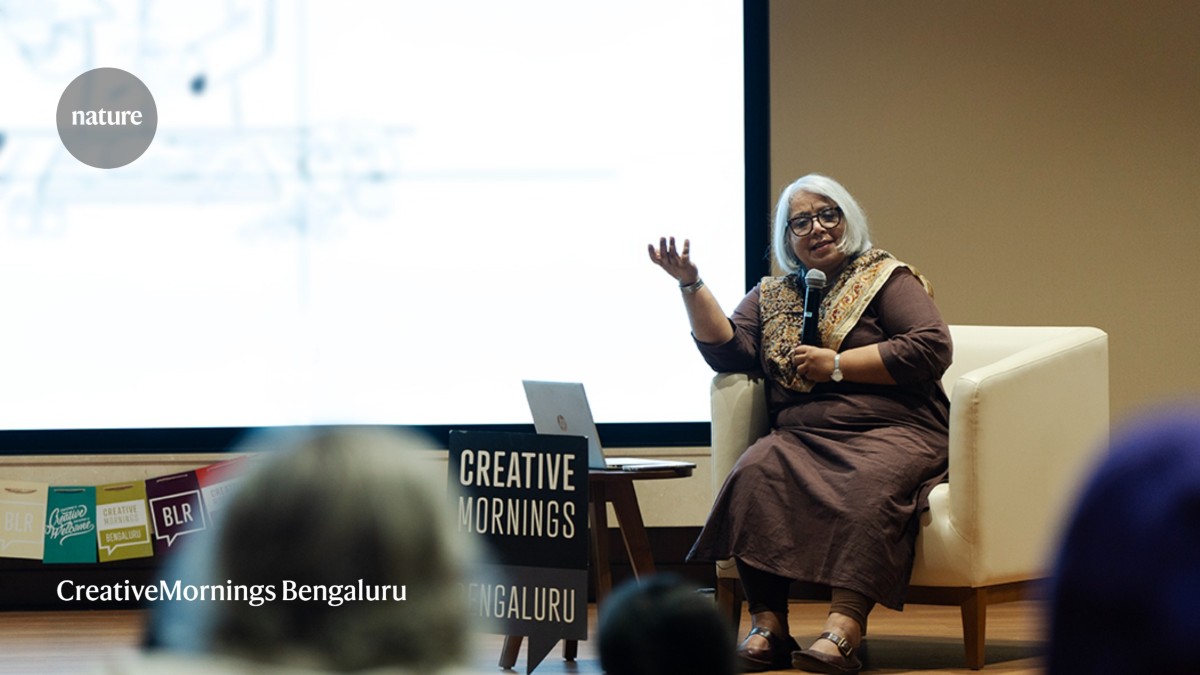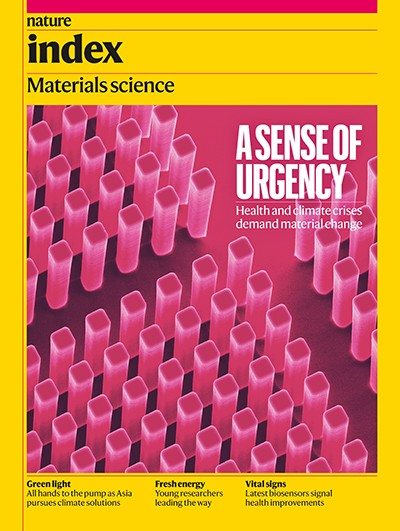
Shobhana Narasimhan gives a talk in Bengaluru on the topic of women in science.Credit: CreativeMornings Bengaluru
The global impact of India’s materials-science research is on the rise, with Nature Index data showing it has risen six places in the country ranking since 2019. But separate data from publisher Elsevier point to a more worrying problem: that papers authored by men in India have a greater citation impact than those written by women. And the gap is getting bigger. Elsevier’s data used a metric called field-weighted citation impact (FWCI), which compares citations received by individuals or groups with the average from similar papers in the field. In 2022, male materials scientists based in India had a 10% higher FWCI than women working in the country.
The gender gap is not so pronounced within other fields; in the agricultural and biological sciences, for example, the FWCI of men is just 2.66% higher than that of women.
According to computational nanoscientist, Shobhana Narasimhan, who chairs the Indian Academy of Science’s Women in Science Initiative, many factors are behind the gender impact gap and the separate, but related, issue of women continuing to be greatly outnumbered by males in the field.
Why does materials science in particular seem to have a problem?
I don’t have a simple answer. In India, we have quite a high percentage of women up to the PhD level, followed by a huge drop: almost half of science PhD students are women, yet they make up fewer than 20% of working scientists.
Nature Index 2024 Materials science
I couldn’t find specific statistics for materials science in India, so I just went to the web pages of about 14 university departments and counted the number of women who are on staff. What I saw was that 11.5% of the scientists are women. It ranged from departments with no women to one where 25% were women. It shows that there is still an uphill battle.
Is there a link between women’s representation and their impact scores?
I don’t get the impression that people in India have a perception that women are intellectually inferior, but there is a very strong belief of what women’s societal roles should be, and that they really should be wives and mothers first and then scientists second.
This attitude makes it harder for women to get into prominent organizations, and research has shown it’s easier to publish your manuscripts if you work at prestigious institutions. The plum jobs go to men; it’s harder for women to break into the top-notch research groups and access their resources. One prestigious Indian institution tracked which of their applicants for academic jobs had been shortlisted and asked to give a ‘job talk’ presentation of their work and they found that between 15% and 20% of men had received such a request, compared with just 3% to 5% of women. This shows how that as a woman it’s harder to make a name for yourself and get ahead in the field.
What needs to change to redress the balance?
I’ve been asked this same question many times by people in the field. I usually say we need to change the perception that a good scientist is working 24/7. This viewpoint is common in India, and it hurts women because there are so many other societal expectations of us. It’s perfectly possible to work eight hours a day and do excellent science.
Do you find men are engaged in this question and search for solutions?
When you talk to them, they’ll often agree that it’s very bad. Some of them will say ‘you women should do something about it’. I tell them it’s not just up to women, and ask why they don’t do something about it, and they look at me in horror. It’s just unthinkable for many men to do something and that irritates me. What’s even worse is if I make a suggestion to a man in power, sometimes they say things like ‘you women don’t know how to help yourselves’. That’s offensive and patronizing. The response is too often ‘it’s your problem’, followed by them saying they know better when we try to improve things.
Are you optimistic for future generations of women?
Attitudes are not changing as fast as they should. You can say that we just have to wait for the dinosaurs to retire, but that’s not necessarily true. There are, however, reasons to hope that things will improve. In the science prizes that the government gives out, it now explicitly says in the criteria that gender can be considered, which was unthinkable not long ago. They have also included specific chapters on equity and inclusion in policy documents.
I would like to suggest that in addition to announcing and rolling out initiatives to help women in science, the government could later check to see how well the programmes are working and to see what we can learn from what works and what doesn’t.
I just wish that there were better statistics and more data. The kinds of questions that you’re asking are very important and it would be nice to have more validated answers to them, because a lot of what I’m saying is either speculation or anecdotal. It would be nice if there were detailed studies.
This interview has been edited for length and clarity.
This article is part of Nature Index 2024 Materials science, an editorially independent supplement. Advertisers have no influence over the content. For more information about Nature Index, see the homepage.



